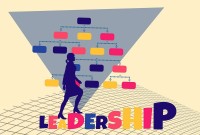- Home
- Business Processes
- Industry Knowledge
- Aerospace Industry
- Automotive Industry
- Banking Domain
- BFSI Industry
- Consumer/ FMCG Industry
- Chemicals Industry
- Engineering & Construction
- Energy Industry
- Education Domain
- Finance Domain
- Hospitality Domain
- Healthcare Industry
- Insurance Domain
- Retail Industry
- Travel and Tourism Domain
- Telecom Industry
- Leadership Skills
- eLearning
- Home
- Leadership
- Team Leadership
- Directive Leadership Style
Directive Leadership Style
This style is characterized by leaders making decisions for others and expecting followers to follow instructions. The directive leader is adept at giving instructions, setting expectations, and establishing timelines and performance standards. However, it is possible for the same leaders to display both directive and supportive behavior as per the demands of the situation.
What is Directive Leadership?
This style is an autocratic style focused on the high task/low relationship. The leader defines the roles of followers and tells them what, when, where, and how to do different tasks. One way communication flows from the leader to the followers. Leaders tell their people exactly what to do, and how to do it. In this approach, the leader focuses his interactions with followers on goal achievement and spends a smaller amount of time using supportive behaviors. Task behavior reflects how much a leader is concerned with the actual task at hand and ensuring that those following him complete it. Using this style, a leader gives instructions about what and how goals are to be achieved by the subordinates and then supervises them personally.
Activities associated with directive behavior are guiding and structuring followers’ activities, planning, scheduling, and assigning responsibilities, defining roles and communication patterns for followers, motivating and conveying expertise, monitoring and following up on assignments, clarifying expectations, goals, and work methods. Transformational leaders can be directive or participative, authoritarian, or democratic based on the demands of the situation.
Characteristics of Democratic Leadership:
- Directive behaviors help followers accomplish goals by getting clear directions, establishing their goals and objectives, evaluation criteria, timelines, roles, responsibilities, and specific sub-tasks to achieve the goals.
- A directive leader sets clear standards of performance and makes the rules and regulations clear to subordinates.
- Being directive ensures accuracy and eliminates time-consuming mistakes
- Rewards may also be increased as needed and role ambiguity decreased (by telling them what they should be doing).
Situations where Effective:
- This may be used when the task is unstructured and complex and the follower is inexperienced.
- From the follower’s perspective, this kind of behavior provides role clarity, clear expectations, satisfaction with work and supervisor, satisfaction with the organization, lower stress, and increased performance.
- This style is used at length within the law enforcement and military communities as well as on manufacturing assembly lines, providing a means of managing a diverse group of people that span a wide range of experience and maturity levels.
- This style is generally appropriate for professionals who are in the early stage of their career and need to learn organizational behaviors.
- This increases the follower's sense of security and control and hence is appropriate to the situation.
Situations where Not Effective:
- The directive leader usually aims to restrict or limit the creativity or initiative of the follower.
- This style of leadership avoids collaborating or empowering others
- Directive behaviors are most of the time is one-way communication that specifies what is to be done and the task can be accomplished and assigning the responsibility for doing it.
Related Links
You May Also Like
-
Emergent leadership occurs when a group member is not appointed or elected as leader, but rather that person steps up as the leader over time within-group interactions. Have you ever faced challenges in getting accepted into your new role of position as a leader? Groups don't automatically accept a new "boss" as a leader. Emergent leadership is what you must do when taking over a new group. Learn more about emergent leadership.
-
“Level 5 Leadership”, this term was coined by Jim Collins in his book “Good to Great” and it is all about achieving "Greatness" as a leader. This article will explain what we mean by Level 5 Leadership and what the characteristics of a Level 5 leader are. What it takes to achieve greatness as a leader, and what are the steps and strategies that one can use to move up to this top level of leadership.
-
Authentic leadership is an approach to leadership that emphasizes building the leader's legitimacy through honest relationships with followers which value their input and are built on an ethical foundation. The authentic leader acts upon his or her values and beliefs, and inspires others to do the same, is committed to know and develop oneself. Are you committed to developing yourself; know your motivations and the purpose of your leadership? Read this article to know more about authentic leadership style and discovering your authentic self.
-
We define Lean as the systematic elimination of waste through a continual effort to decrease inefficiency; the lean leader strives to create a more efficient organization. Lean leadership is a philosophy. It is a consistent way of thinking and being in your role as a leader. The focus of this approach is on raising new leaders and help their team embrace a culture of continuous improvement. Learn what we mean by lean leadership style and its principles.
-
Charles Darwin had once commented that “It is not the strongest or the most intelligent who will survive but those who can best manage change.” Agility means the capability of rapidly and efficiently adapting to changes and recently, agility has been applied in the context of software development, agile enterprise, and agile leadership. Agile leaders play an important, even essential, role in scaling agility in an organization. Understand how being an agile leader helps in effectively catalyzing organizational change.
-
What are the functions which a leader does to establish as a leader? What are the activities undertaken by them to become great leaders, rather revolutionary leaders? The most important tasks done by a leader in all situations are defining the vision, mission, and goals, leading the team, administrative functions, motivating followers, decision making and conflict resolution, and continuous development.
-
This style is characterized by leaders making decisions for others and expecting followers to follow instructions. The directive leader is adept at giving instructions, setting expectations, and establishing timelines and performance standards. However, it is possible for the same leaders to display both directive and supportive behavior as per the demands of the situation.
-
Leadership has been defined in different ways by different sets of scholars. In very simple terms leadership can be defined as the skill of a person to influence an individual or a group for achievement of a goal in a given situation. One can use different dimensions and perspectives to define leadership. Through the evolution of leadership thought, leadership has been defined in various ways discussed here.
-
Adaptive leadership is a style of leadership that emphasizes the importance of each and every person and role within the company. Adaptive leadership views the organization as an ever-changing, living organization, where employees can learn, adapt, and grow. Adaptive leaders mobilize people towards a common goal and also have the courage to experiment with new ideas and approaches. Adaptive leadership is the practice of mobilizing groups of people to tackle tough challenges and thrive. Learn how to adopt this style and how to become an adaptive leader!
-
Bureaucratic leadership relies on a clear chain of command and strict regulations. Bureaucratic leadership style is a very decent style for work involving serious safety risks, such as handling toxic substances, moving large objects. The focus is on compliance with rules and laid down procedures to make sure that the group is doing their job correctly and safely. Learn some advantages and disadvantages of this style and situations in which this style could prove to be effective.
Explore Our Free Training Articles or
Sign Up to Start With Our eLearning Courses

About Us
Learning
© 2023 TechnoFunc, All Rights Reserved










